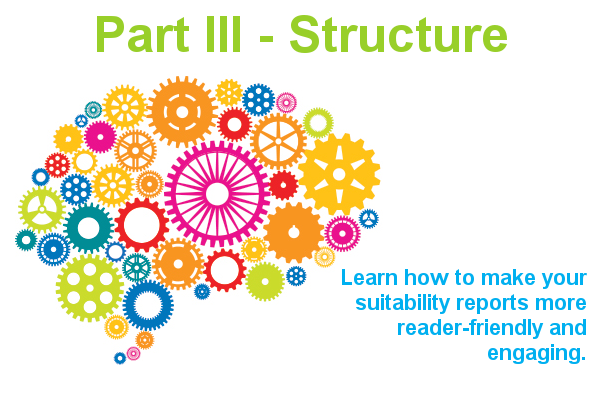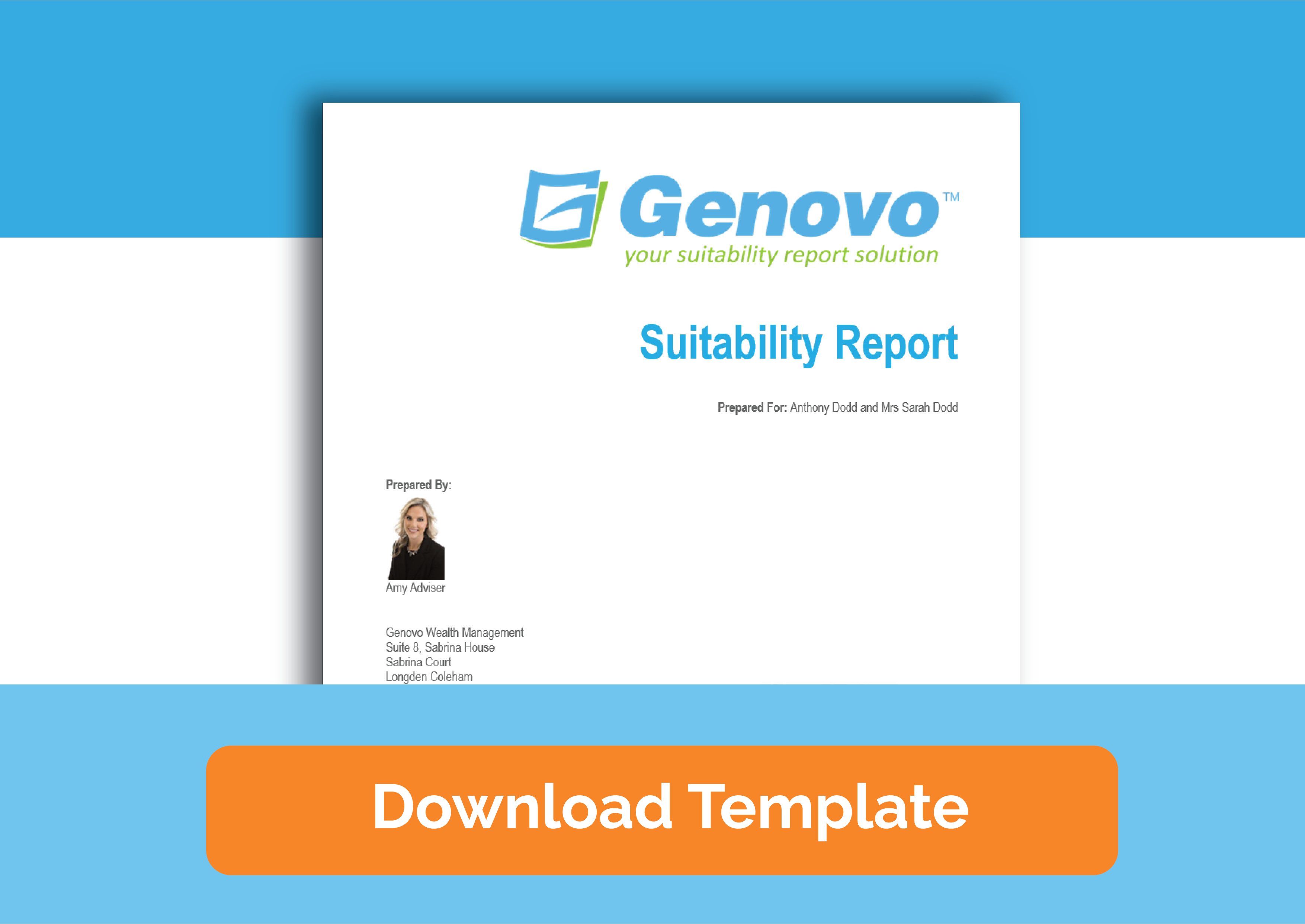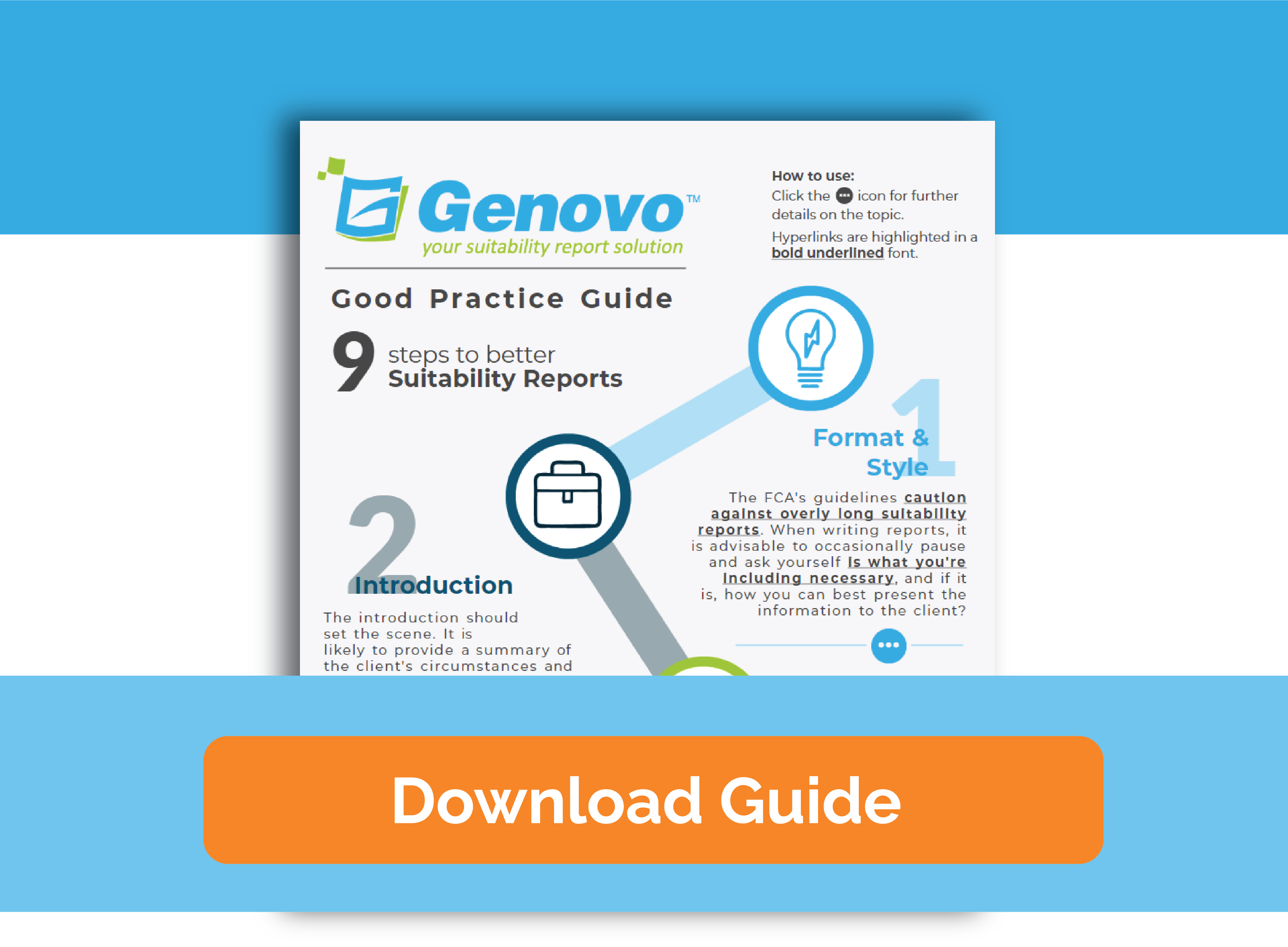
How to structure a suitability report
Ed Evans
Last week I discussed the ideal length of a suitability report. This week I’m going to look at how best to structure a suitability report. However, before I go any further it would be worth emphasising that probably the single biggest factor influencing both the size and structure of your reports will be whether you do in fact provide your clients with a suitability report or a suitability / reason why letter.
Personally I prefer reports as I think they have a more professional feel, and although the regulator has never explicitly expressed a preference, I would suggest the fact that they now refer to them as suitability reports is probably an indication of their preferred format too.
So apologies to anyone reading this who still prefers to write suitability letters, but the rest of this blog will only address how best to structure a suitability report.
Embrace white space
Think of your suitability report as you would a website – easy on the eye means lots of white space. Look for logical places to divide the information and then start a new paragraph, heading or section. If this means the report becomes a few pages longer than it might have been, don’t sweat it.
Headings
It’s important to use a consistent hierarchy of clear and distinctive headings throughout your suitability reports. Headings not only help to break-up the text, but they also allow the reader to quickly find what they’re looking for. They should be informative and alert the reader to upcoming topics or sub-topics. I’d also suggest you add colour and / or apply a different font or style to your headings to make them even more eye-catching.
A summary
Clients may not always have time to read the report in full, or they may just want to read a summary and only skim read the rest of the report, so summarise the key points up front. This is best achieved by including a summary of the client’s objectives and your recommendations or an executive summary at the beginning of the report.
Table of contents
If your report extends to more than ten pages, I’d always recommend that you include a table of contents. It will not only make the report easier to navigate, but will also help manage the reader’s expectations of the content.
Appendix
Don’t bog the reader down in detail in the main body of the report – it only detracts from what’s really important. Include all technical and supporting information within an appendix and refer the client to it at relevant points in the report.
Ok that’s it for another week. Next week I plan to look at some of the factors influencing the format of a suitability report.
As always, if you got a spare minute, please leave a comment – I’d love to hear your thoughts. Make sure you don’t miss the next instalment – subscribe and get email alerts when we update our blog.
Many of the concepts I’ve written about in this series of blogs are highlighted in our suitability report template. See how you can make your suitability reports more reader-friendly and engaging – download your free suitability report template here.

